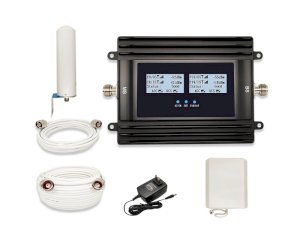To reach additional capacity, operators have three options at their disposal. The first one is to increase spectral efficiency, the second one – to expand spectrum, while the third one presupposes adding cells or sectors to the already existing network infrastructure.
To put it simply, we can say that to ensure better capacity operators should find the way to minimize noise and maximize interference suppression on the path of the radio frequency. In this article, I will explain you how the most widely-used antenna technologies can help to reach these goals.
Antenna Solutions
LTE networks have shown themselves as a very sensitive to interference technology. That’s why, engineers who are working in this sphere need to be extremely attentive to the issues related to designing cells for LTE networks as well as to selecting antennas for them.
When a mobile services provider takes a decision to incorporate an LTE network in a new band, it is necessary to install new antennas instead of the old ones. These new antennas should have a larger number of arrays in the same radome. Such a peculiarity ensures more ports for the new band. In such a way, it is possible to increase capacity of the facilities without increasing the number of radomes. This solution has a lot of benefits. The most serious of them is the fact that facilities leasing costs remain practically the same.
But to add more antenna arrays in the same radomes can be a rather challenging task as it may lead to the deterioration of the quality of services ensured by the existing network. That’s why it is vital for an operator to choose for its network only those multi-band antennas that can ensure either equivalent or better performance than the antenna that was used previously.
While making a choice, operators should take into consideration that antennas may have different capacities and characteristics. A good antenna should maximize the energy inside the cell ensuring excellent coverage and minimize the energy radiated outside the cell ensuring interference to other users.
Increasing the number of sectors at a site is considered to be a very cost-efficient approach to enhancing capacity which can be practically doubled thanks to splitting the sector into two sectors with the help of a multi-beam antenna.
It is already obvious that in the future, operators will face even a more serious demand for speedy and high-quality services. That’s why they should never stop working on enhancing the performance of their networks, upgrading their facilities, and applying new technologies. Only with such an approach they will manage to retain their clients and stay afloat in the serious competition that already exists in the market.







